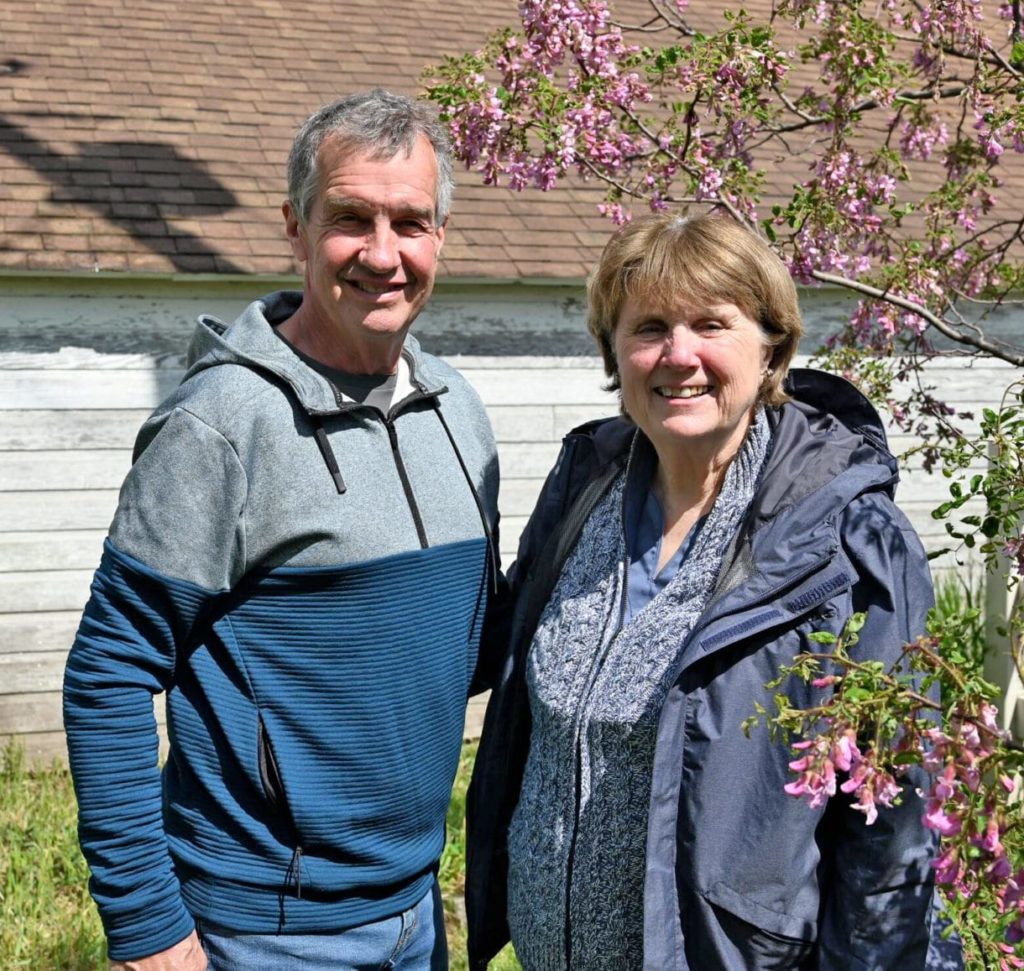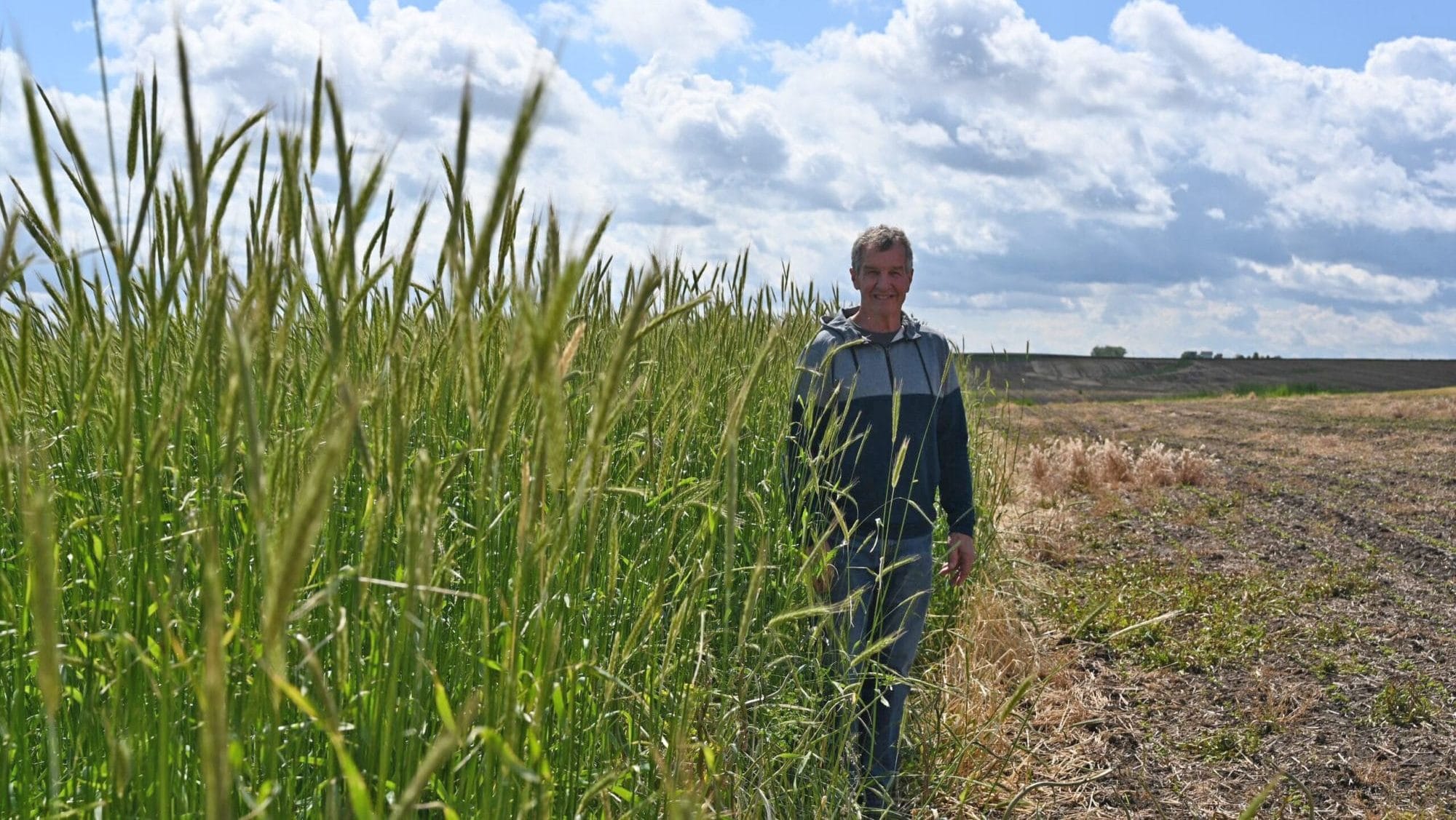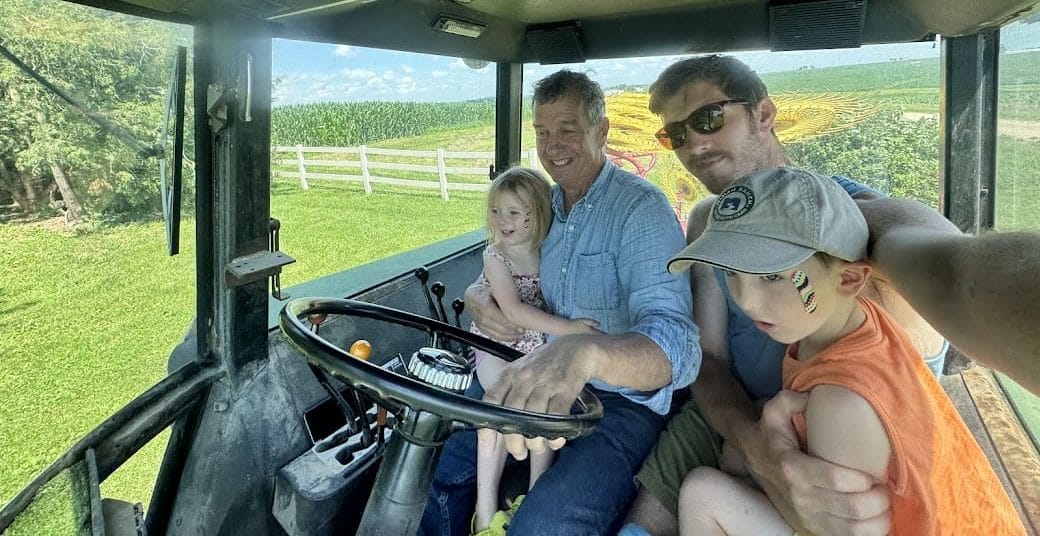Sharing Values, Exchanging Ideas
Two generations of the Pelzer family share values and ideas across the years as they steward their farm for the future
 When Mary and Jim Pelzer first started farming together near Tipton, Iowa, they farmed the way Jim had been taught by his father.
When Mary and Jim Pelzer first started farming together near Tipton, Iowa, they farmed the way Jim had been taught by his father.
The eldest of nine children, Jim worked hard on the farm from a young age. But as he got older, he realized there was no longer a place for him on his family farm. He and Mary found a patch of land a short distance away and started their own farrow-to-finish hog and row crop farm – one that included a fair amount of tillage, as was the norm in their area at the time.
Eager to be involved, but lacking a farming background, Mary learned various farm tasks. “I just remember when we were first farming, when we had CB [citizens band] radios instead of cell phones, it was so muddy and wet that I’d get the combine stuck,” Mary says. “One evening, I just kept calling, saying, ‘Jim, I’m stuck again.’ But I can’t think of the last time that was a big problem.” She turns to Jim, “Have you had to pull me out for years? Maybe decades?”
“Thank goodness, no!” Jim says, in a voice that echoes the stress of those moments so long ago.
Frustrated by those muddy field experiences, the Pelzers were drawn to learning about alternative farming methods. On a visit to central Iowa, they attended a field day hosted by PFI cofounders Dick and Sharon Thompson. They left feeling inspired to try something new. That spark eventually led to their incorporating no-till in the mid-1990s – a change that brought noticeable benefits.
Open To Change
Like so many farm families, the farm crisis of the 1980s had taken its toll on the Pelzers. With three young children to care for, the only way Jim and Mary could sustain their farm was to find full-time jobs. Mary began working for the local community college while Jim hauled seed corn and later worked as a rural postal carrier. Once they started no-till, they found it saved time and labor, and helped keep the soil in place.
Mary and Jim’s kids – Tracy, Kurt and Chris – grew up helping with many farm tasks. But they were also encouraged to explore other interests like theater and sports, something Jim didn’t get the chance to do. Jim and Mary showed the importance of having off-farm employment as they balanced farm duties with their other jobs.
The kids also roamed the land. They especially enjoyed the creek areas on some rented acres their parents maintained through conservation practices like filter strips and contour farming. Chris Pelzer recalls valuing conservation from a young age. “I always had an interest in soils and the environment,” he says, “I think largely cultivated from my parents.”
Chris would eventually pursue that interest at Iowa State University, where he studied environmental science. While there, he started working for an ISU agricultural research lab exploring cover crops and carbon sequestration. One year, while home on break, he brought home some hairy vetch seed and planted it in the garden just to see what happened.
Up to that point, the Pelzers had not yet tried cover cropping. But they wanted to keep reducing erosion on their hilly land. Seeing the hairy vetch grow in the garden piqued Jim’s interest and he decided to plant a rye cover crop on the steep slopes of their rental ground that next fall. That was in the late 2000s.

Jim Pelzer stands next to his rye crop to show its height at his farm near Tipton, Iowa, in May 2025.
“Towards the end of April we had 4-5 inches of rain. On one farm where it was just bean ground the year before and no cover crop, it washed away places I’ve never even seen washed,” Jim says.
“But on the hilly field, the water wasn’t flushing the ditches out or waterways. That really sold me on cover crops.”
After that dramatic event, Jim and Mary kept cover cropping – and they began to notice changes on their farm. Before cover crops, Mary recalls her frustration trying to till clay ground in their rental acres. “But that even got to the point where it was looking pretty good. And a big thing Jim noticed over the years was that all the earthworms came back.”
Bridging Field and Lab
Chris continued in agricultural research, eventually getting a position as a laboratory manager and research support specialist in Cornell University’s Sustainable Cropping Systems Lab, where he works today. In this position, he manages the field research and balances a range of responsibilities. “He’s a jack-of-all-trades in the department,” Mary says. “He puts in the crop and takes out the crop, does all the measurements, does reporting, helps write up stuff, does extension work and teaches classes.”
In his years of research work, Chris has noticed that many researchers he’s worked with don’t have the practical farm experience he does. “One thing I bring to our lab group is just having lived and worked on a farm,” Chris says. That perspective helps him stay grounded in the ultimate goal of his work.
“In research,” he says, “our work should have weight if we want to make it applicable to farmers and have value in the real world.”

A terminated cover crop sits aside a filter strip on the Pelzer farm near Tipton, Iowa, in May 2025.
Chris’ work also promotes an exchange of ideas with his parents. Mary and Jim enjoy hearing about Chris’ latest research, and they make a point of seeing his plots at Cornell when they visit. They all discuss new ideas of farming practices regularly on the phone. As Jim and Mary make decisions about trying new practices on their farm, Chris often chips in, noting when something sounds good but has drawbacks in reality.
“I try to be the moderating voice sometimes,” Chris says. “But other times my parents are the ones who can see the barriers or the challenges.”
Looking Forward, Going Back
A year ago, the rental farm across from Mary and Jim’s home that the Pelzers had farmed with no-till or strip-till for about 35 years was sold to a new owner. Soon after, the fields were all tilled. The trees and shrubs along the creeks where Chris and his siblings used to play and run were ripped out. Shorn of their vegetation, the creeks are now hardly visible across the field and the abundant wildlife is gone. The family mourns the loss of that land they stewarded for so long.
“I think it’s been hard for my parents because they see it every day and they are really dedicated in terms of conservation practices,” Chris says. “But as soon as the new landowners started farming it, they had a very different type of land ethic.” Mary agrees you need to make a living from the farm, but explains the philosophy she and Jim have applied to their farm.
“You have to have enough return on investment to keep on farming,” she says, “but hopefully leave the land better than you found it.”
Jim and Mary continue to farm their family’s acres and wonder increasingly about how the farm will look for coming generations. As of now, their children live scattered across the country, settled into their own lives and homes. But their emotional attachment to the home farm lingers.
For now, Chris is content with his career in agricultural research and the life he leads in Ithaca, New York, with his wife and three young children. But as his own children grow, questions about the future of the family farm, and his role in it, loom in his mind. “Now having kids, I look fondly back on my childhood and what I experienced and learned growing up on a farm,” he says. “My oldest son, who is 4, has only been to my parents’ farm a couple times. But he’s always talking about going back. He loves it.”

Chris and his kids help Jim with some farm work on the Pelzer farm near Tipton, Iowa. Photo courtesy of Chris Pelzer.
It’s too soon to say what the farm will look like when Jim and Mary choose to retire. In the meantime, the soil in their former rental field that they built up over years of implementing conservation practices will continue to hold benefits for the new owners for a few more crop years.
The land ethic and values Mary and Jim have lived out through their many years on the farm, however, will last for generations.
